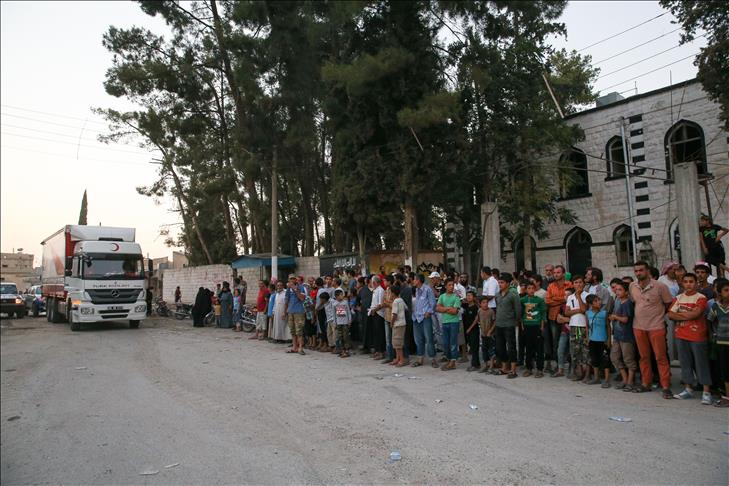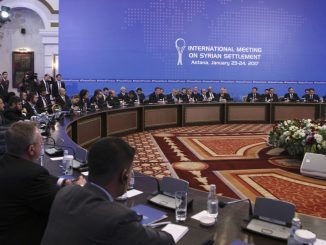Seventy-five Syrian refugees arrived Monday in Italy, coming from the camps of the UNHCR in Lebanon, as a part of a humanitarian agreement signed by Rome with Christian communities.
Italian Minister of Foreign Affairs Paolo Gentiloni received, at Fiumicino airport, the refugees coming from Lebanon as a part of “human corridors” agreement which was signed with Christian communities in the Italian Union of Evangelical and Waldesian churches and the Catholic Saint’Egidio church, last year, according to The New Arab.
The total number of Syrians, who arrived in Italy through this humanitarian initiative, becomes 353 refugees. The first group, which consisted of 3 people, arrived on February 4, and the second, which consisted of 93 people, arrived on 29th of the same month, while a third group of 101 people arrived in last May. Group four, which included 81 people, arrived in June.
The group which arrived in Monday is the fifth group to arrive legally in Italy, after obtaining a humanitarian visa. The members of the said group are originally from Latakia, Damascus, Homs, and Aleppo cities in Syria.
“Humanitarian Corridors” initiative aims at facilitating the entry of some refugee categories to Italy for humanitarian reasons. Two offices for the initiative were opened to receive refugees in Tangiers in Morocco and the Lebanese capital Beirut.
Resettlement: what is it?
Resettlement is an international protection tool designed for refugees who cannot return to their countries, even if they have sought protection in another State, where their integration or their safety is at risk. These people can be transferred to another State that has voluntarily agreed to the resettlement program and is providing a certain number of places.
Resettlement is a safe and regulated immigration channel: on the one hand, it can reduce the illegal traffic of people fleeing war zones; on the other hand, the States themselves determine how many refugees they will admit and check whether the refugees meet the requirements for legal access to their territory.
Humanitarian corridors in Italy
The resettlement programme provides refugees with legal access to a country where they will be safe, and that will grant them civil and social rights. It is still, however, a pathway available to only a few thousand people. The greatest difficulty lies in the selection of beneficiaries among the hundreds living in refugee camps, as well as in persuading the States to offer their financial and logistical cooperation.
Therefore, in Italy, response to the refugee crisis also came from civil society organizations – particularly the FCEI (Federation of Evangelical Churches in Italy) and the Community of Sant’Egidio. While looking at the complexity of European regulations, they saw the opportunity to create an additional legal access channel for especially vulnerable asylum-seekers. The pilot initiative for humanitarian corridors was the result of a Memorandum of Understanding signed with the Ministries of the Interior and of Foreign Affairs, with the NGOs envisaging the arrival of 1,000 refugees over two years. So far, the beneficiaries have come from Lebanon, with more to follow from Morocco and Ethiopia, in order to intercept the great migratory flows created by war in the Middle East and Sub-Saharan Africa, before the refugees take to the sea.)
The initiative was lauded by Pope Francis himself: the pontiff took 12 asylum-seekers to Rome after a trip to Lesbos, with the Community of Sant’Egidio providing the first welcome.
Currently, 279 people (mostly Syrian refugees) have arrived in Italy through these corridors. As in the case of the UNHCR programme, this initiative provides a safe pathway for refugees, in line with governmental security standards; the potential beneficiaries are pre-selected by the NGOs, then vetted by the Ministry of the Interior and finally granted a humanitarian limited territorial validity visa.
The pilot initiative was launched at no cost to the State: the NGOs cover travelling and first reception expenses. So far the initiative has raised 1 million euros, largely from the Eight per thousand tax devolved to the Waldensian Church.



